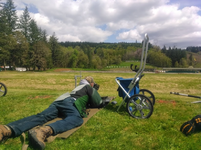Diamond Lifetime
Bronze Supporter
- Messages
- 357
- Reactions
- 562
Once upon a time (around 1997) pistols in 7.62x25 were being imported in great numbers. There was essentially no loading data at the time nor ammunition that wasn't corrosive surplus, or really expensive import. Though being similar and virtually identical to 7.62x25 Mauser it was loaded to higher velocities, with some exceptionally high velocities in some loadings. So, having bought a surplus CZ52 I embarked upon an adventure in developing different loads. The days spent doing so are a blur. But I chronographed and tested numerous loads. I tried to stay in the burn rate of the original cartridges, but made some slight deviations according to the burn chart. I had numerous powders at the time and used those of the appropriate burn rate. Most worked good, one at least wasn't up to snuff. I was fortunate to have documented and written of the project and Hand Loader magazine published my work. October 1999, issue 201. I didn't make any money, but it was satisfying.
Last Edited:
















